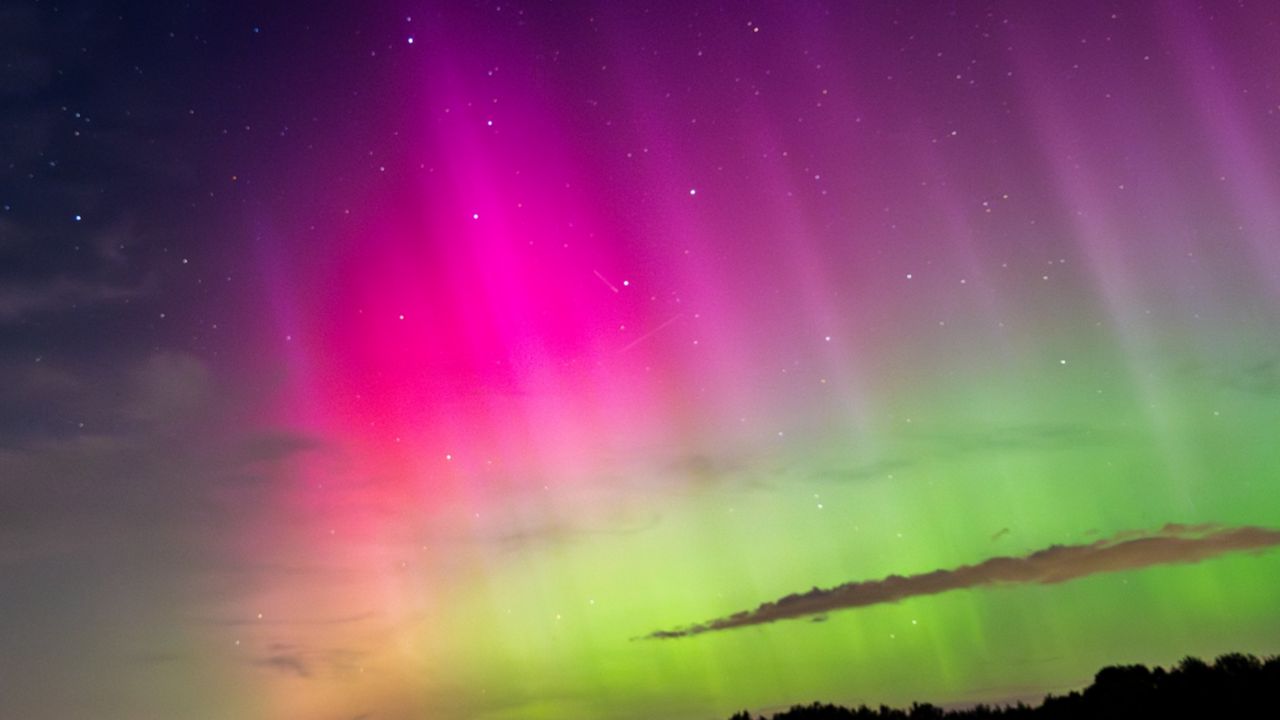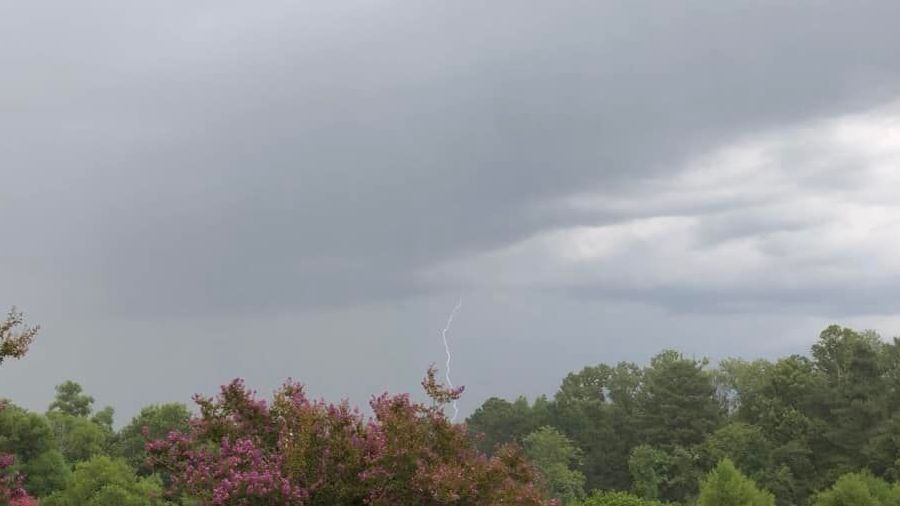Check out these amazing photos of the Northern lights, also known as the Aurora Borealis, across the St. Louis region last night.
A coronal mass ejection (CME) occurred earlier in the week. This eruption of solar material will arrive on Earth today, becoming a severe geomagnetic storm (G4) and could make the northern lights visible as far south as the Mid-Latitudes.
The sun is currently in an upswing of its 11-year solar cycle. Scientists notice more sunspots as they migrate toward the equator of the sun, and when their magnetic fields tangle, solar storms erupt.
Earth’s magnetic field acts as a buffer to keep particles and energy ejected from the sun at bay. However, if the solar storm is strong enough, those particles can penetrate the Earth’s atmosphere, giving off light, the auroras we see.
The geomagentic storm magnitude is categorized by the K-index or the Planetary K-index. Kp is used by the Space Weather Prediction Center to send alerts and a good predictor of locations of the aurora borealis. A G4 storm can give off a Kp value of 8 or 9.
Our team of meteorologists dives deep into the science of weather and breaks down timely weather data and information. To view more weather and climate stories, check out our weather blogs section.










